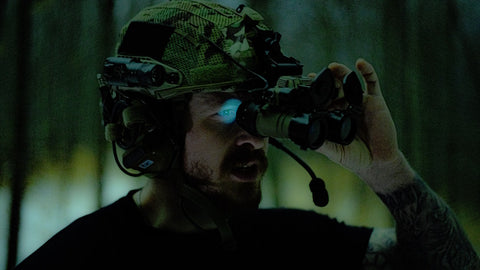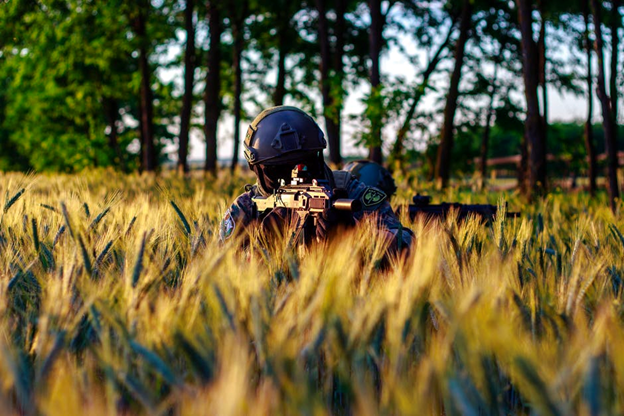The Future of Tactical Gear


Tactical clothing continues to advance rapidly. Manufacturers and scientists have worked closely to produce the best protective gear in the world, and we’re excited to see what the future of tactical equipment holds. In this article, we'll walk you through a list of some of the innovative pieces of gear that manufacturers are reportedly working on.
READ MORE: A Guide to Picking the Right Gear For Cold Weather
Why Does Tactical Clothing Develop So Fast?
It may seem like the future is moving fast, but tactical gear has always been developed quickly.
This is true because of the nature of tactical armour, and the environments it is used in.
In most wars throughout history, each side would try to get the upper hand against their opponents. All sides would spend time and resources creating the best weapons, and as a result, they realized they'd need better armour, too.
Today, all tactical professionals need the best armour, and manufacturers are working hard to bring us closer to the future.
These Tactical Pieces are the Gear of the Future
More Ballistic Clothing
If you're a tactical professional, you're probably familiar with ballistic armour. This gear is known for its bulletproof properties, and is made from a base – usually Kevlar – that is coasted with a thermoplastic resin.
The U.S. started to explore the uses of ballistic armour at the end of the Vietnam war. It became popular quickly, and was used in a popular helmet taken to Panama in the late '80s.
The ballistic helmets used now are allegedly 35% more protective than previous iterations, and we only expect developments to continue.
The most recent wave of work on ballistic gear aims to answer this question: how can gear further protect the arms, neck and shoulders without limiting arm mobility.
READ MORE: Vests or Plate Carries -- Which Should You Choose?
Smart Fabrics
'Smart fabrics' are a fascinating development. They combine high-tech gear and clothing for intense environments. To make them, manufacturers weave digital sensors into the clothing itself.
There are three types, or 'generations', of clothing:
-
First generation: a sensor is attached to the clothing
-
Second generation: a sensor is embedded into the clothing
-
Third generation: the clothing itself is the sensor
Some of the developments we've heard about include a shirt that detects lung conditions, and third-gen gear that measures body pressure and temperature.
However, there's still a long way to go with smart fabrics. They require a lot of energy and are hard to keep discreet. Plus, tech can fail easily.
Thin Fabrics
In 2020, scientists began working on a super-thin material that can only be seen via microscope: it's two atoms thick! The material uses two carbon sheets stacked on top of one another and rotated, creating what is called a 'twisted bilayer'.
Thin materials like this could likely benefit tactical professionals in many ways.
Liquid Armour
You might not normally think the words 'liquid' and 'armour' go together, but developers have found benefits for this strange approach. Kevlar normally needs plenty of layers – about 40 – to stop a bullet, but some liquid coating have properties that make it so less layers are needed. This ultimately makes the armour thinner and better for mobility.
READ MORE: Proper Cleaning Techniques for Tactical Clothing
Other Gear of the Future
Flashlight Developments
LED flashlights are popular because they're easy to access and don't cost much to produce. Tactical flashlights are bright enough to light up dark areas that are far away, but they also have another use: self-defense. Specifically, their bright light can stun hostile opponents.
Manufacturers are hoping to create flashlights that can handle extreme heating and extended range.
Medical Equipment Developments
The medical industry is one of the most rapidly-changing industries. Specifically, medical gear is not only becoming more helpful but more convenient to use: that means it's more discreet and easier to carry. Plus, tactical professionals are receiving more training to use these materials effectively.
3D printing in particular has become a huge factor in the development of medical gear, and we expect it to be a significant factor in the next few years.
Radio Equipment Developments
Obviously, tactical professionals need to communicate with each other, but the issues surrounding radio gear are more complicated than that. The future of radio equipment will have to tackle issues like security and safety, as issues like hacking become more prominent.
READ MORE: Tactical Gear Checklist for Law Enforcement
Conclusion
From two-atom-thin material to tech secretly being woven into fabrics, there's plenty to look forward to in the world of tactical gear.
At PSP Corp, we keep up to date with the tactical gear industry. You can be assured that we stock the best of the best, no matter what you're looking for.










